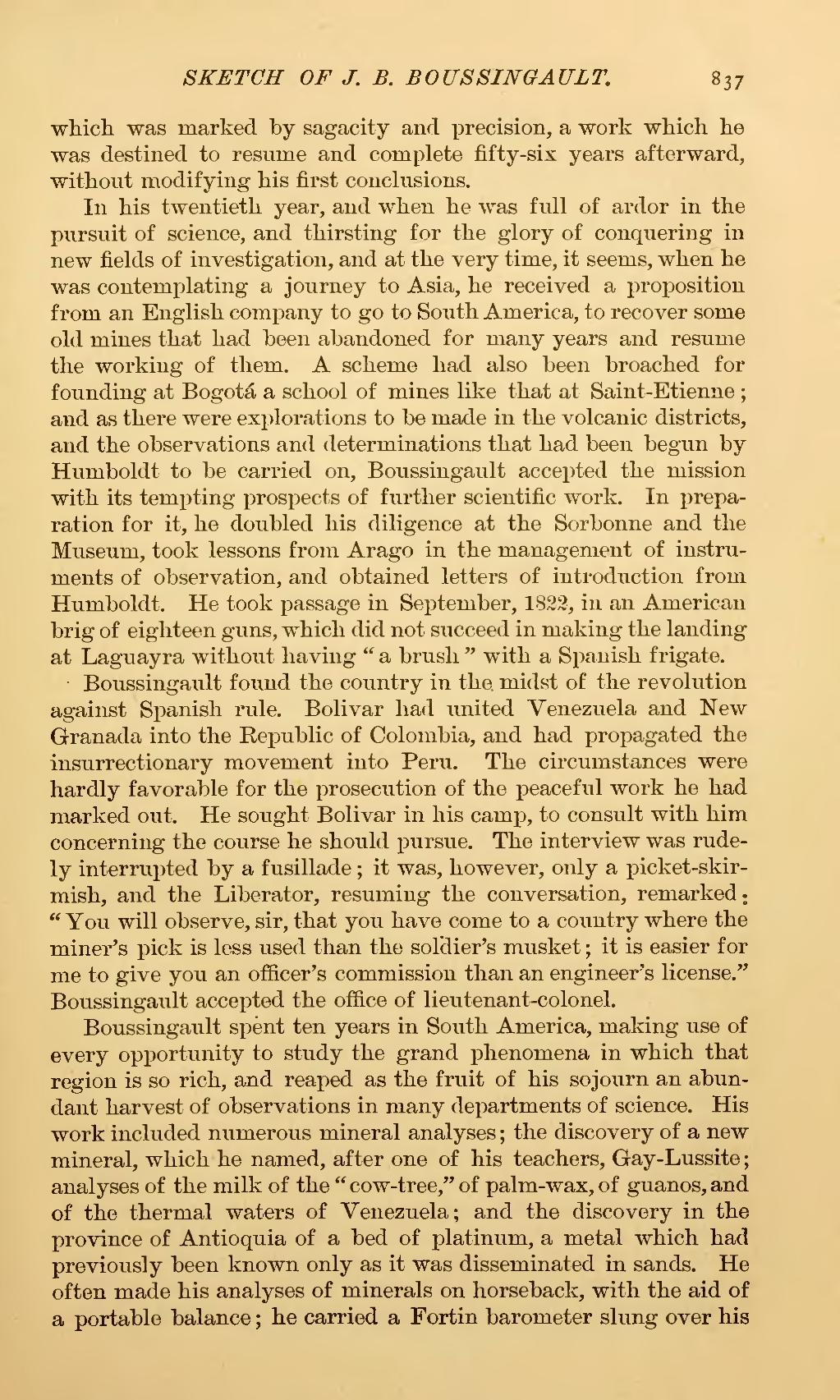which was marked by sagacity and precision, a work which he was destined to resume and complete fifty-six years afterward, without modifying his first conclusions.
In his twentieth year, and when he was full of ardor in the pursuit of science, and thirsting for the glory of conquering in new fields of investigation, and at the very time, it seems, when he was contemplating a journey to Asia, he received a proposition from an English company to go to South America, to recover some old mines that had been abandoned for many years and resume the working of them. A scheme had also been broached for founding at Bogota a school of mines like that at Saint-Etienne; and as there were explorations to be made in the volcanic districts, and the observations and determinations that had been begun by Humboldt to be carried on, Boussingault accepted the mission with its tempting prospects of further scientific work. In preparation for it, he doubled his diligence at the Sorbonne and the Museum, took lessons from Arago in the management of instruments of observation, and obtained letters of introduction from Humboldt, He took passage in September, 1822, in an American brig of eighteen guns, which did not succeed in making the landing at Laguayra without having "a brush" with a Spanish frigate.
Boussingault found the country in the midst of the revolution against Spanish rule. Bolivar had united Venezuela and New Granada into the Republic of Colombia, and had propagated the insurrectionary movement into Peru. The circumstances were hardly favorable for the prosecution of the peaceful work he had marked out. He sought Bolivar in his camp, to consult with him concerning the course he should pursue. The interview was rudely interrupted by a fusillade; it was, however, only a picket-skirmish, and the Liberator, resuming the conversation, remarked; "You will observe, sir, that you have come to a country where the miner's pick is less used than the soldier's musket; it is easier for me to give you an officer's commission than an engineer's license." Boussingault accepted the office of lieutenant-colonel.
Boussingault spent ten years in South America, making use of every opportunity to study the grand phenomena in which that region is so rich, and reaped as the fruit of his sojourn an abundant harvest of observations in many departments of science. His work included numerous mineral analyses; the discovery of a new mineral, which he named, after one of his teachers, Gay-Lussite; analyses of the milk of the "cow-tree," of palm-wax, of guanos, and of the thermal waters of Venezuela; and the discovery in the province of Antioquia of a bed of platinum, a metal which had previously been known only as it was disseminated in sands. He often made his analyses of minerals on horseback, with the aid of a portable balance; he carried a Fortin barometer slung over his
